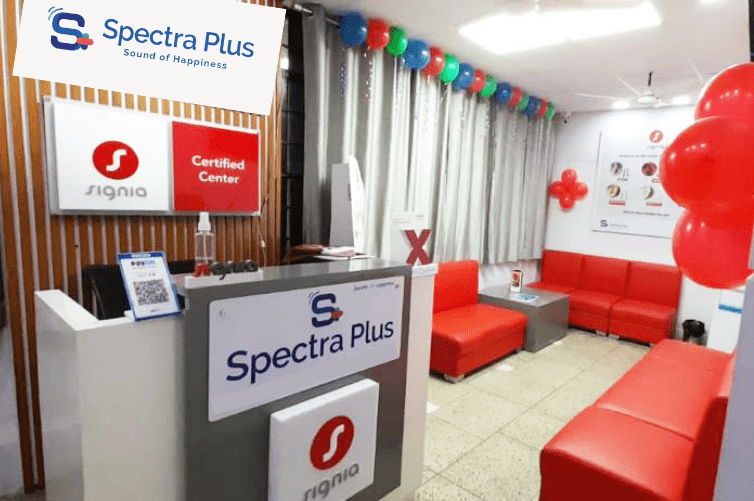Complete Guide to BTE Hearing Aids: Features, Fitting & Price
So here’s the deal. Hearing aids aren’t something people talk about over coffee, but they probably should. One out of five people over the age of 60 has hearing loss in India, and many don’t even know it, or just ignore it because, well, it’s awkward. And when they do go looking for solutions, the terms alone can feel like a quiz you didn’t study for.
Let’s just simplify it. If you’ve heard of the BTE hearing aid (that’s Behind-The-Ear), and you're not sure if it’s the right choice, you’re in the right place. No jargon. No sales talk. Just what you need to know, plain and honest.
What Exactly Is a BTE Hearing Aid?
A BTE hearing aid sits behind your ear (shocker, I know). It’s got a small tube that runs into your ear canal. That part can either connect to a soft dome or a custom earmold—yeah, we’ll get to that.
These devices have been around for decades, but don’t let that scare you off. They’ve evolved quietly while everyone has obsessed over wireless earbuds. Modern BTE hearing aids aren’t clunky bricks anymore—they’re lighter, smarter, and way more subtle than they used to be.
And if you're wondering how they differ from something like a RIC hearing aid, here’s the short of it:
- RIC hearing aids place the speaker in the canal itself.
- BTE hearing aids keep all the parts behind the ear, and just pipe the sound in.
That means BTEs are often stronger. They’re sort of the workhorse in the hearing aid world—maybe not flashy, but reliable.
Who Actually Needs One?
If your hearing loss is moderate to severe, you’ll probably be pointed toward a BTE model. That’s just how it goes. Especially if you need more amplification or struggle with dexterity, these are easier to handle than tiny in-ear gadgets.
Also, if you’re getting a BTE hearing aid with earmold, it means you’re after a more secure fit. Custom earmolds are usually recommended for people who have uniquely shaped ear canals or need the device to stay put all day without fuss.
Key Features Worth Paying Attention To
Let’s not pretend every feature matters to everyone. But here are a few that are actually worth a second look:
- Directional microphones (help when you're trying to hear someone across a noisy room).
- Feedback cancellation (nobody likes that high-pitched squeal).
- Rechargeable batteries (because swapping tiny ones every few days isn’t fun).
- Bluetooth (handy for calls or streaming, if you’re into that).
- Telecoil (for places like churches or theatres that use induction loops—still a thing, surprisingly).
You don’t need all of these. Sometimes, simpler is better. Just depends on how you live your life.
Fitting a BTE Hearing Aid—It’s Not One-Size-Fits-All
Here’s the part most people rush, but shouldn’t. Fitting matters. It’s not just about size, but also the settings, comfort, and how your brain processes sound now.
You’ll usually go through:
- A full hearing test.
- A recommendation from an audiologist.
- If you go with the BTE hearing aid with earmold, they’ll take an impression of your ear (it’s like Play-Doh, kind of).
- Then, you’ll get the device and it’ll be tuned. Might take a couple visits to get it just right.
It’s normal to need adjustments. Your brain has to re-learn how to hear, which is kind of wild when you think about it.
Let’s Talk Price—It’s Not Always Cheap, But There’s a Range
The BTE hearing aid price in India varies. A lot. You can find something basic for around ₹10,000, but the higher-end options with advanced tech can hit ₹2,00,000 or more. That doesn’t mean you have to spend big to hear better, though. It just means: ask what’s included.
Some clinics add service packages, extended warranties, or follow-ups. Others don’t. Always check.
Also—worth noting—most health insurance in India doesn’t cover hearing aids. Some employers might, so it's worth asking. And yes, that’s frustrating. Hearing is kind of important, you know?
BTE vs RIC—A Quick Side Note
You might be tempted by a RIC hearing aid. They’re smaller, a bit more modern-looking. But they don’t always offer the same power. BTEs are still preferred when hearing loss gets more serious.
Also, RICs have parts in the ear canal, which means they’re slightly more exposed to earwax and moisture. Not a deal-breaker, but something to think about.
If you like simple and sturdy, BTE is probably a better fit.
Final Thoughts—Not a Sales Pitch
This isn’t about convincing you to buy anything. It’s about understanding what might work for you or someone you care about.
A BTE hearing aid isn’t perfect. No hearing aid is. You’ll still miss stuff sometimes. But they can make a real difference—one that’s not dramatic, but steady. Like background music that fades in slowly after you thought the speakers were off.
If you’re not sure where to start, talk to an audiologist you trust. Ask questions. Try a model or two if possible. And don’t feel bad if you don’t like the first one. That happens.
Because honestly, nothing about hearing loss is simple. But with the right tools, it doesn’t have to be isolating either.




